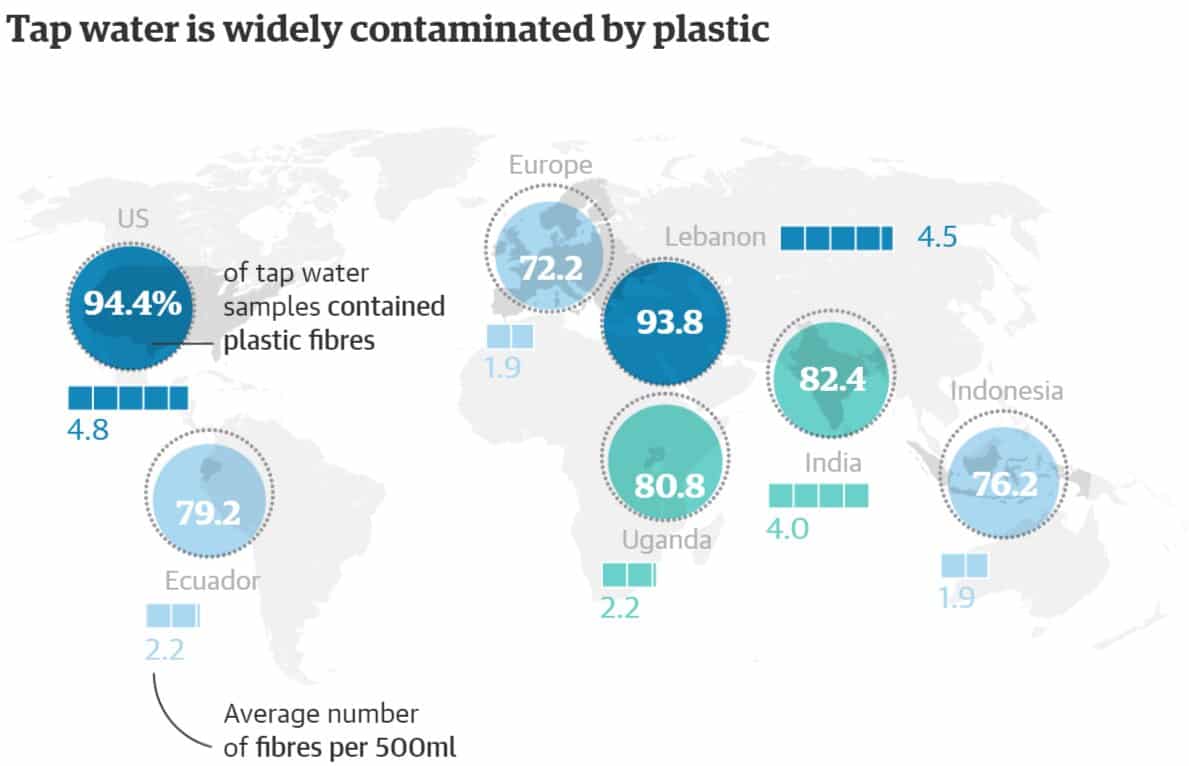Microplastics in Drinking Water - A Growing Global Concern

In recent years, the pervasive presence of microplastics in the environment has become a pressing global issue. These tiny plastic particles, less than 5 millimeters in size, have infiltrated various ecosystems, from the deepest oceans to the highest mountains. Alarmingly, studies have increasingly revealed the presence of microplastics in our drinking water, raising concerns about potential health risks.
The Scale of the Problem
Microplastics enter our water sources through a variety of pathways. The breakdown of larger plastic debris, such as bottles, bags, and fishing nets, is a major contributor. Other sources include wastewater treatment plants, which often struggle to effectively filter out microplastics, and industrial processes that release plastic microbeads and fibers.
A 2019 study published in the journal "Environmental Science & Technology" analyzed tap water samples from around the world and found microplastics in 83% of them. The highest concentrations were detected in North America, followed by Europe and Asia. These findings underscore the global scale of microplastic contamination in drinking water.
Furthermore, a 2020 study by the World Wide Fund for Nature (WWF) estimated that humans ingest approximately 5 grams of microplastics per week, which is equivalent to the weight of a credit card. This ingestion occurs not only through drinking water but also through consumption of contaminated seafood and other food products.
Potential Health Impacts
While the long-term health effects of microplastic ingestion are still being investigated, there is growing concern within the scientific community. Microplastics can act as vectors for other contaminants, such as harmful bacteria and persistent organic pollutants (POPs). These substances can adsorb onto the surface of microplastics and potentially be transported into the human body.
Studies on laboratory animals have shown that exposure to microplastics can lead to various adverse effects, including inflammation, oxidative stress, and damage to organs such as the liver and kidneys. However, more research is needed to determine the potential health impacts on humans, particularly at the levels typically found in drinking water.
Mitigation and Solutions
Addressing the issue of microplastics in drinking water requires a multi-faceted approach. Reducing plastic consumption and improving waste management practices are crucial steps in preventing further contamination. This includes phasing out single-use plastics, promoting reusable alternatives, and enhancing recycling rates.
Investing in advanced wastewater treatment technologies is also essential. Conventional treatment plants often lack the capacity to effectively remove microplastics. Implementing filtration systems, such as sand filters and membrane bioreactors, can significantly reduce the concentration of these particles in treated water.
Furthermore, research and development of innovative materials that are biodegradable or easily recyclable can contribute to mitigating the long-term impacts of plastic pollution. Promoting public awareness and education about the issue is equally important to encourage responsible consumer behavior and support policy changes.
Concluding Thoughts
The presence of microplastics in drinking water is an emerging environmental health concern that demands immediate attention. While more research is needed to fully understand the potential risks, the ubiquitous nature of these particles and the potential for harmful effects warrant proactive measures. By implementing effective mitigation strategies, we can strive to protect our water resources and safeguard human health from the threat of microplastic contamination.


















Comments ()